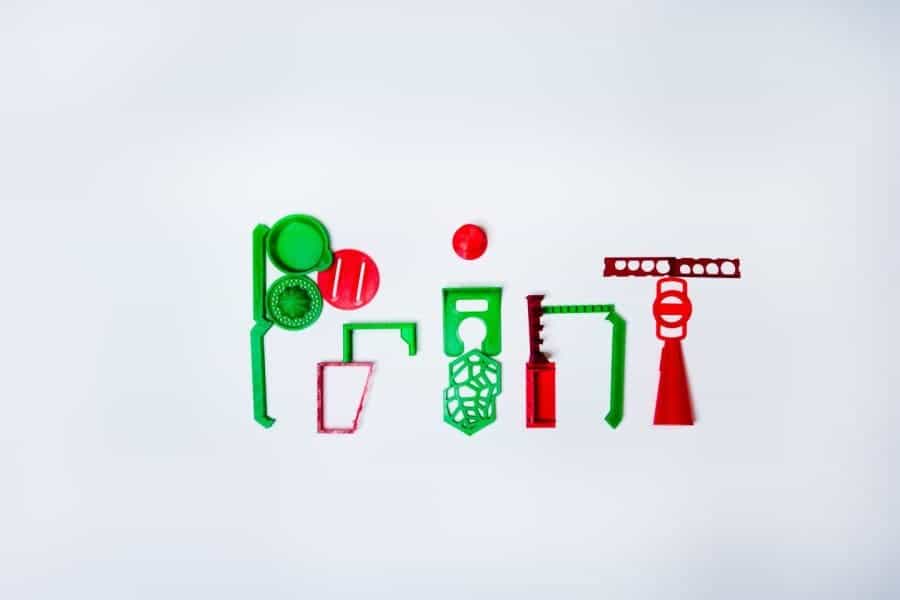A new study has found that regular consumers who invest in a home 3D Printer can not only get their money back by printing household items — but they can also make a 1000% return on investment over five years.

Credit: Michigan Tech, Sarah Bird
If you’d tell a businessman that he can make an investment and get his money back in 6 months, his eyes would pop. If you’d say that he can make ten times more in five years, he’d probably ask you where to sign. Yet average Americans can make that decision right now by buying a 3D printer.
The advent of 3D printers has taken the world by storm, and what was just a few years ago a futuristic “someday” technology is now a stable of several industries. You can 3D print musical instruments, electronics, … pretty much anything you can imagine. But you don’t have to go crazy with 3D printing, you can also print regular day-to-day use objects. In a new study, Michigan Technological University Associate Professor Joshua Pearce set out to determine just how practical that really is. After all, you need to buy the 3D printer and supplies, so it’s quite an investment.
In a new study, Michigan Technological University Associate Professor Joshua Pearce set out to determine just how practical that really is. After all, you need to buy the 3D printer and supplies, so it’s quite an investment.
Well, he found that the investment pays off. He also wanted to make sure that this was the case for users who are not tech-savvy, so he worked with Emily Petersen, an undergraduate student majoring in materials science and engineering, to use a 3-D printer fresh out of the box. She had no experienced whatsoever with the 3D printer.
“I’d never been up close and personal with a 3-D printer before,” Petersen says. “And the few printers I had seen were industrial ones. I thought learning to operate the printer was going to take me forever, but I was relieved when it turned out to be so easy.”

They purchased a device called a Lulzbot Mini — a funny name, but quite a versatile machine. It can print in high resolution, works with most operating systems, and supports open-source hardware and software. This is quite important, as you don’t really want to spend a lot of money on software and designs. There are literally millions of free 3D printing designs readily available on the web.
They focused on 26 random objects, including reasonably popular things such as tool holders, snowboard binder clips, and shower heads. They monitored each item’s cost in terms of raw materials, energy consumption, and print time to determine its overall cost. They then compared it to the shelf price of similar objects, on a per-item basis. For all products, they chose both a high-end and a low-end price which they compared with the object they’d printed themselves. In both cases, the savings were huge. The low-cost comparisons yielded 93 percent savings, while the high-cost ones saved a whopping 98.65 percent on average. The entire process was as simple as ‘see the design you like and click print’, and no complicated things were printed.
“With the low-cost estimates, the printer pays for itself in three years and all the costs associated with printing — such as the price of plastic and electricity — are not only earned back, but provide a 25 percent return on investment. After five years, it’s more than 100 percent,” Pearce says. “With the high-cost estimates, the printer pays for itself within six months. And after five years, you’ve not only recouped all the costs associated with printing, you’ve saved more than $12,000.”
The analysis was carried on for a six-month process, estimating that a family would reasonably print an item per week. Their analysis also considered a five-year lifespan for the 3D printing machine, which is realistic — and perhaps even a bit pessimistic. Because the Lulzbot Mini is open source, all the files to upgrade and fix the machine are available for free online. Even the bits which are most likely to break can just be 3D printed with your own machine.
“I’m an engineering student,” Petersen says, “but I was new to this type of hands-on troubleshooting. The fact that I was able to troubleshoot any issues I had and produce 26 items relatively easily is a testament to how accessible this technology is to the average American consumer.”
This shows just how much 3D printing has developed as a technology, and how it can revolutionize our very lives. Just imagine, aside from printing stuff you need around the house, you can get custom gifts for your friends and family, build something whenever you need instead of buying it, and overall have an awesome piece of technology in your house — while saving hundreds of dollars a year. The future really is here.
Journal Reference: Emily Petersen, Joshua Pearce. Emergence of Home Manufacturing in the Developed World: Return on Investment for Open-Source 3-D Printers. Technologies, 2017; 5 (1): 7 DOI: 10.3390/technologies5010007


